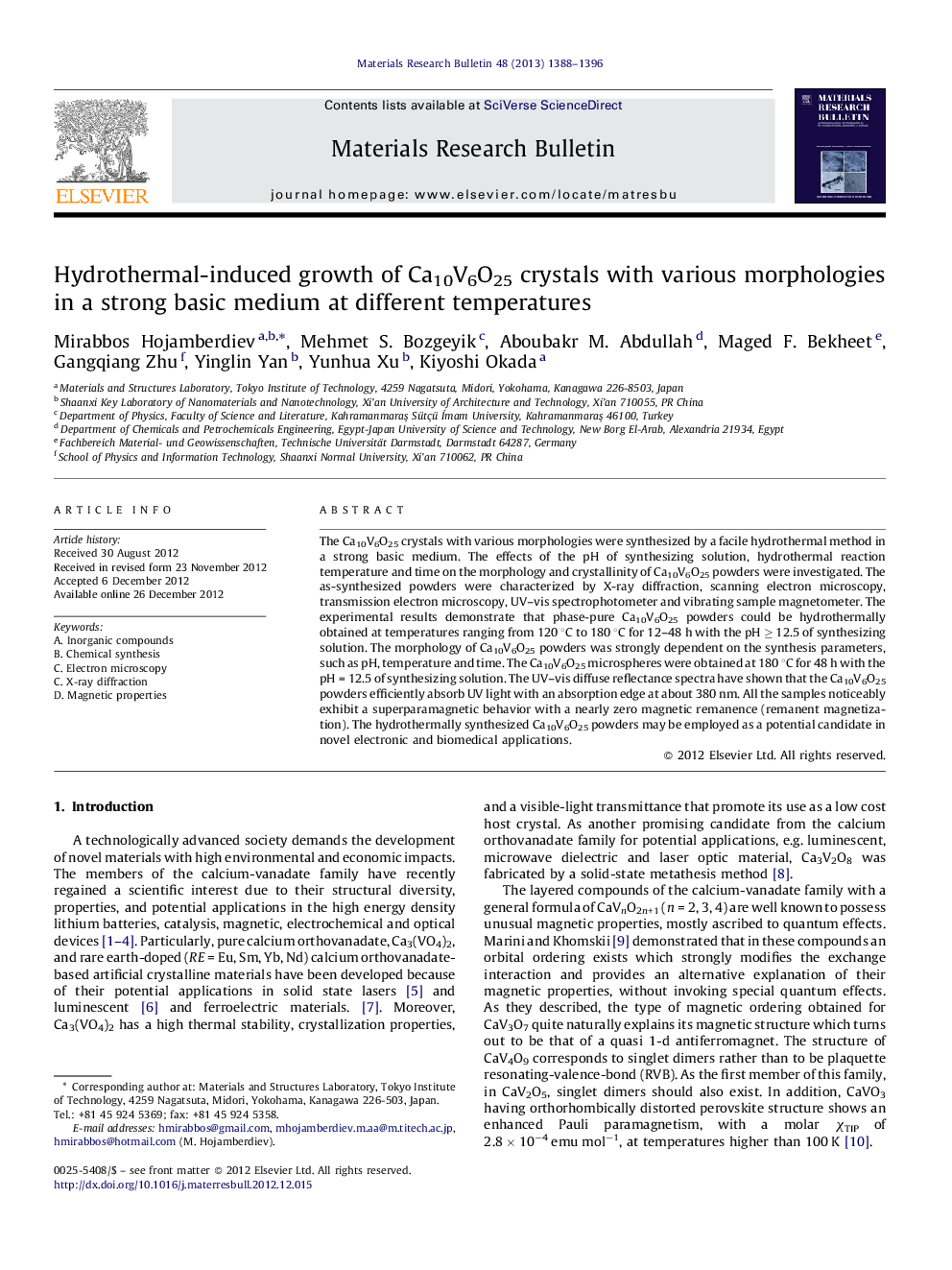| Article ID | Journal | Published Year | Pages | File Type |
|---|---|---|---|---|
| 1489049 | Materials Research Bulletin | 2013 | 9 Pages |
The Ca10V6O25 crystals with various morphologies were synthesized by a facile hydrothermal method in a strong basic medium. The effects of the pH of synthesizing solution, hydrothermal reaction temperature and time on the morphology and crystallinity of Ca10V6O25 powders were investigated. The as-synthesized powders were characterized by X-ray diffraction, scanning electron microscopy, transmission electron microscopy, UV–vis spectrophotometer and vibrating sample magnetometer. The experimental results demonstrate that phase-pure Ca10V6O25 powders could be hydrothermally obtained at temperatures ranging from 120 °C to 180 °C for 12–48 h with the pH ≥ 12.5 of synthesizing solution. The morphology of Ca10V6O25 powders was strongly dependent on the synthesis parameters, such as pH, temperature and time. The Ca10V6O25 microspheres were obtained at 180 °C for 48 h with the pH = 12.5 of synthesizing solution. The UV–vis diffuse reflectance spectra have shown that the Ca10V6O25 powders efficiently absorb UV light with an absorption edge at about 380 nm. All the samples noticeably exhibit a superparamagnetic behavior with a nearly zero magnetic remanence (remanent magnetization). The hydrothermally synthesized Ca10V6O25 powders may be employed as a potential candidate in novel electronic and biomedical applications.
Graphical abstractFigure optionsDownload full-size imageDownload as PowerPoint slideHighlights► C10V6O25 crystals are hydrothermally grown in a strong basic medium. ► With the increase in the pH the average crystallite size of Ca10V6O25 increases. ► Morphological transformation occurs with increasing reaction temperature. ► Ca10V6O25 powders absorb UV light with the absorption edge at ∼380 nm. ► Ca10V6O25 powders demonstrate a superparamagnetic behavior.
